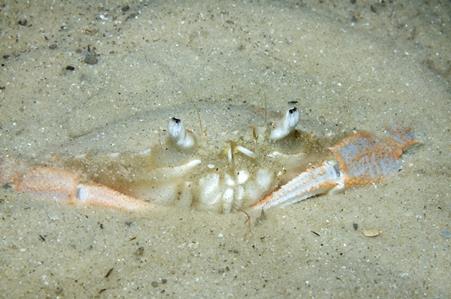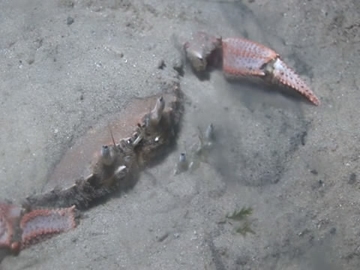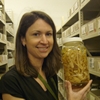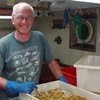General Description
Carapace pale brown to blue-grey, about as wide as long. Rear leg ends with flat rounded paddle. A pair of large blood-red to mauve grey 'eye' spots toward the rear of the carapace. Up to 11 cm wide (carapace).
Biology
Sand Crabs are particularly agile being able to bury rapidly into the sand by digging backwards when disturbed, leaving only their stalked eyes poking up into the water above. Fisherman find Ovalipes a nuisance by biting their bare feet in shallow waters, and expertly removing bait from their fishing hooks. They are usually active at night.
Habitat
Sand areas and beaches, to depth of 100 m.
Soft substrates
Distribution guide
Southern Australia.
Species Group
Depth
Shallow (1-30 m)
Deep ( > 30 m)
Water Column
Max Size
11 cm
Diet
Carnivore
Harmful
Not harmful but a nip from large claws could be painful.
Commercial Species
Yes
Global Dispersal
Native to Australia
Species Code
MoV 1657
Conservation Status
- DSE Advisory List : Not listed
- EPBC Act 1999 : Not listed
- IUCN Red List : Not listed










